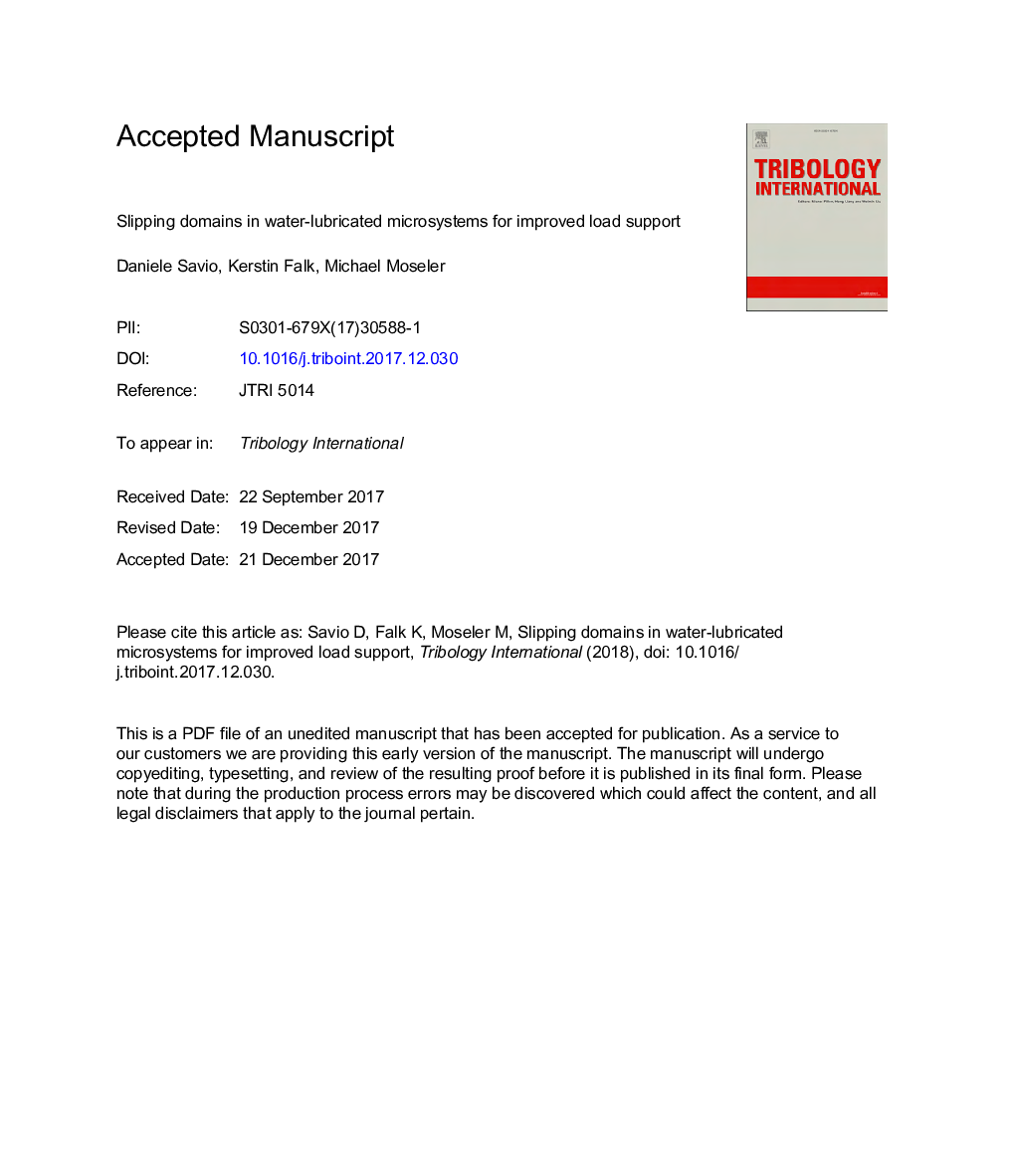| Article ID | Journal | Published Year | Pages | File Type |
|---|---|---|---|---|
| 7002063 | Tribology International | 2018 | 19 Pages |
Abstract
This work discusses the use of slipping domains to improve load support in water-lubricated microsystems through a multi-scale approach. A semi-analytical continuum formulation is developed to calculate changes in pressure distribution for a line contact with added slip. It is found that the slipping region maximizing hydrodynamic lift should favor inlet flow, but not be located at the contact outlet. Estimations for its positioning are provided. Slip on flat surfaces gives the largest gains in load support and friction reduction, but moderate improvements are also possible on circular geometries featuring high convergence ratios. Finally, Molecular Dynamics simulations are employed to quantify slip on hydrophobic surfaces. Among the considered topologies, graphene is an excellent candidate to generate slip in water-lubricated microsystems.
Related Topics
Physical Sciences and Engineering
Chemical Engineering
Colloid and Surface Chemistry
Authors
Daniele Savio, Kerstin Falk, Michael Moseler,
